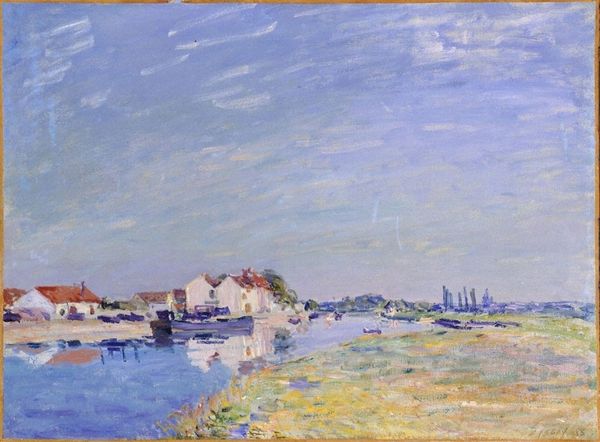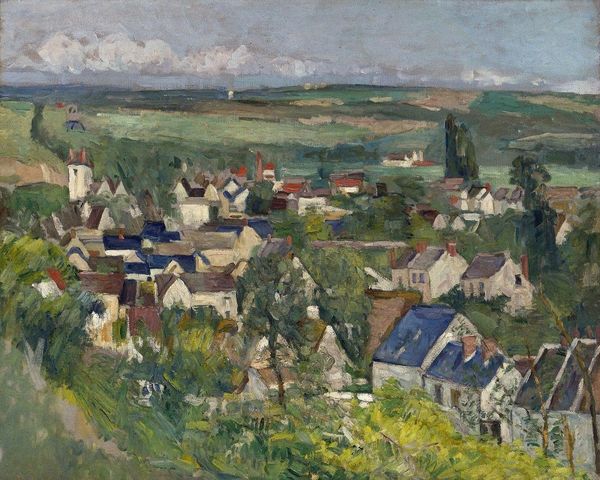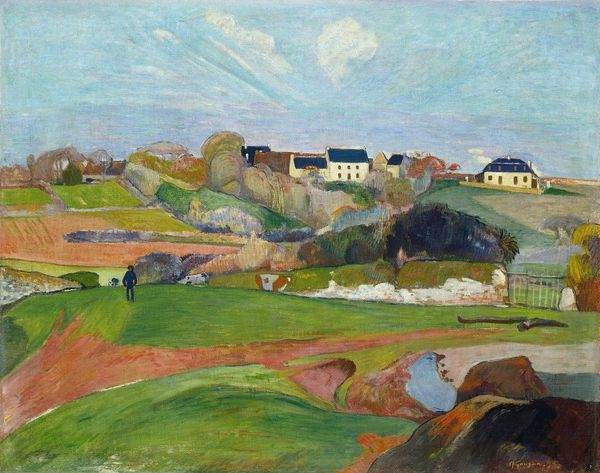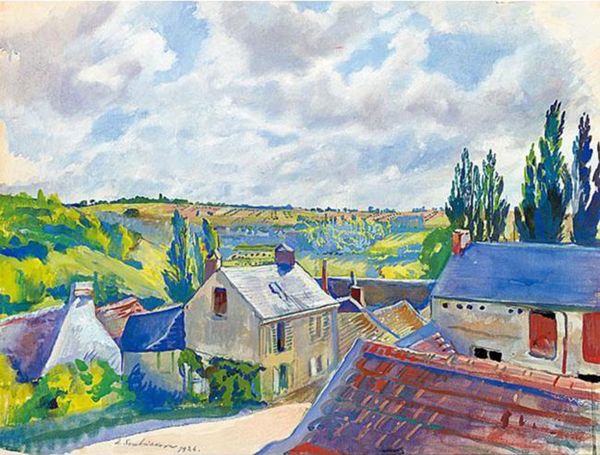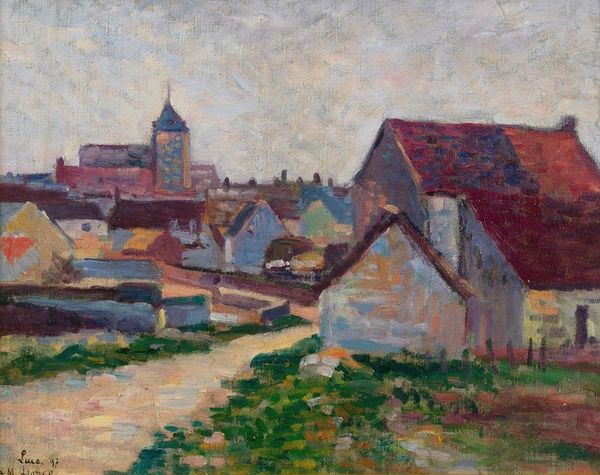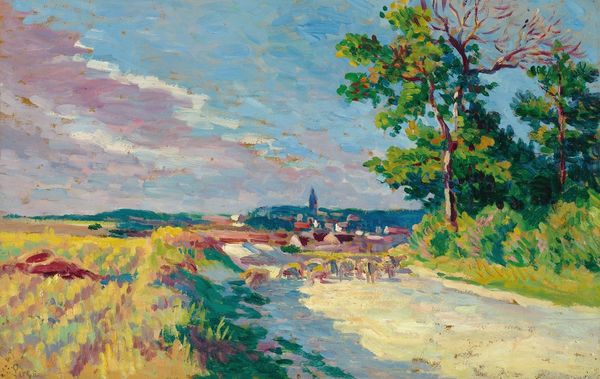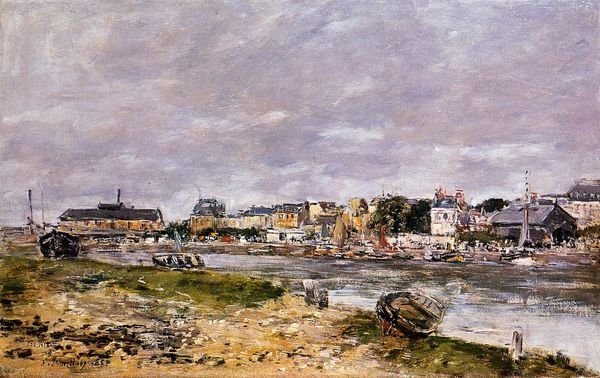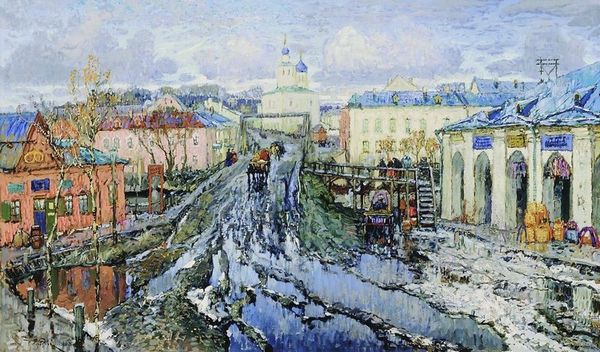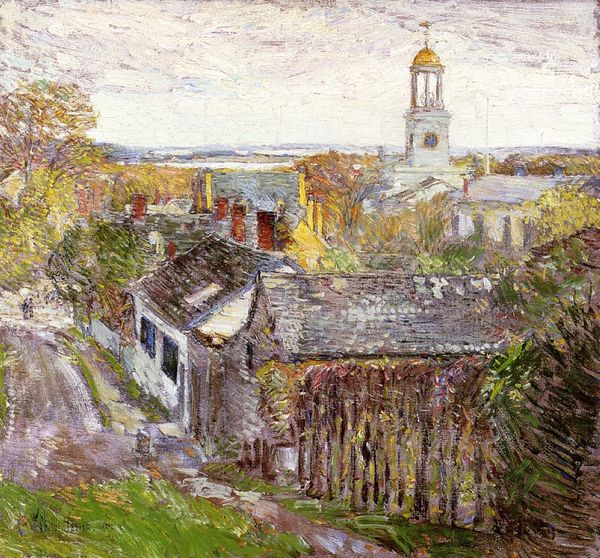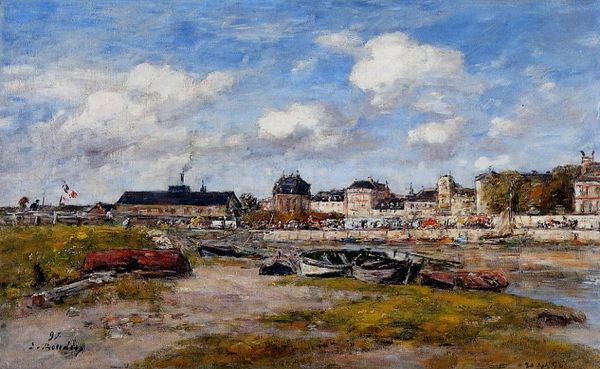
painting, plein-air, oil-paint, impasto
#
painting
#
impressionism
#
plein-air
#
landscape
#
oil-paint
#
landscape
#
impressionist landscape
#
oil painting
#
impasto
#
cityscape
#
post-impressionism
Copyright: Public domain
Curator: Paul Cézanne painted "Île de France Landscape" around 1880, a cityscape rendered in oil on canvas. The work is currently held in a private collection. Editor: It immediately strikes me as…unresolved. The impasto is so thick; it feels like a sketch, almost vibrating with potential energy. The color palette is surprisingly restrained, primarily blues, yellows, and whites, yet there's a sense of dynamism. Curator: It's insightful to call it unresolved. Cézanne was at a transitional point, moving away from impressionism yet not fully embracing his own unique post-impressionist style. He was living in a France grappling with its own identity, recovering from the Franco-Prussian War and rapidly industrializing. The cityscape itself speaks to these shifts, a landscape on the cusp of transformation. Editor: Tell me more about his technique. I see the touches of plein-air, but it lacks the fleeting quality I often associate with impressionism. Curator: Exactly. While employing the impressionist practice of painting outdoors, Cézanne sought to move beyond capturing fleeting moments. Instead, he was trying to construct a more solid, durable reality through his deliberate application of paint. The thick impasto you mentioned contributes to this sense of weight and permanence. Note, too, how he subverts the usual conventions of perspective by fracturing objects. This disrupts a singular viewpoint. This foreshadows Cubism. Editor: Yes, it certainly feels like a prelude. This method results in an overall fragmented, almost dreamlike image that makes me uneasy because it lacks visual harmony. Curator: That feeling of unease, I think, stems from that liminal space he occupies in art history. But I argue the historical weight and sociopolitical changes he subtly addressed by representing these cityscapes are visually powerful statements when analyzing the art movement in the decades ahead. Editor: Ultimately, what resonates most is this persistent tension: tradition versus innovation, the fleeting versus the permanent. It’s almost as if the painting itself is caught in the very act of becoming. Curator: Absolutely. This piece offers a lens through which to view not only Cézanne's personal journey, but France's societal shifts too. Editor: It does compel you to look closer, doesn’t it, beyond that initially jarring surface? It demands a sort of active seeing.
Comments
No comments
Be the first to comment and join the conversation on the ultimate creative platform.
